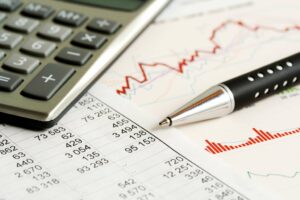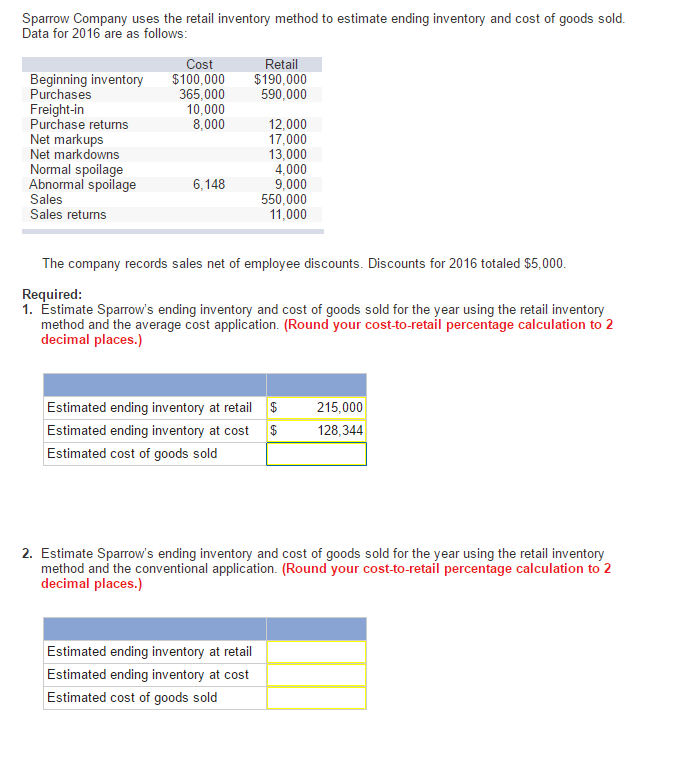They are VAT exempt, so they get pulled out and accounted for differently on the invoices. A2X will split the payout data according to which month the sales or fees actually occurred. This will ensure that your financial accounts properly record the transactions in the month that they occurred. If you are utilizing the Cost of Goods Sold feature within A2X, the inventory account assigned in the COGS tab will be an Asset Account.
Asset accounts make up the Balance Sheet Report and are not visible on the Profit and Loss Report. We’d like to say upfront that product types are generally an ‘extra-for-experts’ setting that not all users are going to want or need. They let https://www.online-accounting.net/ you group many different SKUs into single line items for special accounting or tax treatment. There are lots of different scenarios, and your financial adviser or tax adviser can help you choose if and when this setting is appropriate.
Asset Accounts These accounts generally have a debit value and are made up of assets that will have a value. They are split into Tangible (physical items) and Intangible (non-physical) assets. Some users also use this option to track broad categories of products in their P&L reporting for management. As an ecommerce seller ensuring you collect the right taxes for your sales, and account for those taxes is an important responsibility. You may benefit from using tax apps such as Avalara, Quaderno, Taxify or Taxjar to verify how much your client is required to remit.
- GABA and serotonin are natural chemicals in the body that directly influence emotion and mood and regulate levels of stress and anxiety.
- Accountants and bookkeepers working with ecommerce clients face unique challenges.
- Expense accounts generally have a debit balance and affect the Profit and Loss Report.
- Please visit our Quality Control page to find out more about the rigorous process that we follow to ensure that every bottle of A2X is safe.
- For best results, we recommend taking 1 to 2 capsules of A2X when you wake up in the morning so that the calming nutrients can work throughout the day.
There are many different types of transactions in ecommerce accounting including sales, discounts, refunds, fees, pending payments, gift cards, sales tax and more. You can choose to map each category type to an account within QuickBooks or Xero. For advanced mapping, you can map at a sub-category level if you prefer to have more control of your mapping, and you can https://www.quick-bookkeeping.net/ easily refine your mapping at any point. Examples include laptop computers, goodwill, cars, cash, buildings, inventory. If money is owed to the business (products bought on credit), then the amount owed will sit on a debtor account which is an Asset Account. A bank account is also considered an asset account provided that an overdraft facility is not available.
Are You Suffocating Under Worry and Anxiety?
If the balance has a debit balance, it can mean serious trouble for the future of the company. Capital Accounts These accounts will represent the amount of capital invested into the business by the owners. If the company makes a profit, the Capital Account will increase by that amount.
These products are not intended to diagnose, treat, cure, or prevent any disease. Yes, every bottle of A2X has a tamper-proof seal on the outside and inside of the cap. In addition, A2X is carefully formulated in a GMP-certified, FDA-inspected facility in New York. Please visit our Quality Control page to find out more about the rigorous process that we follow to ensure that every bottle of A2X is safe. Every purchase of our 30 Day Supply comes with our 30 Day Money Back Guarantee.
How does A2X work with Sales Tax?
A business owner/manager will want to see an upward trend when analyzing this account. Choose the option “Group by product type” and click on the “Update Invoice Settings” button. If the business is solvent and trading, this account will be a credit balance.
Different types of accounts fulfill different purposes but are all related. Please note, that once we change the A2X invoice setting, we need to refresh each settlement we wish to post to reflect the new calculations. Regular expression patterns allow us to create special patterns of our SKUs to save maintaining lists as we add/remove SKUs from the catalog. If you have any questions about A2X, please feel free to reach out to the Partner training team for more information at Accountants and bookkeepers working with ecommerce clients face unique challenges. While the intricacies of ecommerce accounting differ vastly from traditional retail, A2X emerges as a trusted solution.
Most Helpful Positive Review
If you order A2X every month, we recommend that you customize your own Auto-Delivery plan for your own convenience. All Auto-Delivery shipments come with free shipping and a full 30 Day Money Back Guarantee, no matter how many bottles you order. As an accountant or bookkeeper, you have a few options to get started with A2X. Transaction details are attached to each invoice or journal entry for your reference.
More reasons Accountants and Bookkeepers love A2X
Just contact us and we will immediately arrange for a refund less shipping and handling. GABA and serotonin are natural chemicals in the body that directly influence emotion and mood and regulate levels of stress and anxiety.
But why do you need A2X for your clients, and how does it hold its ground as the top choice? A2X is designed for accounting and bookkeeping firms to make reconciling easy and accurate. For best results, we recommend taking 1 to 2 capsules of A2X when you wake up in the morning so that the calming nutrients can work throughout the day. On days when feel you need a little extra assistance, taking an additional capsule in the evening can help keep you calm throughout the night and into the next morning.
This depends on the type of business you operate and the tax regimes within the country. Expense accounts generally have a debit balance and affect the Profit and Loss Report. More information about regular expression patterns is available HERE, if interested – using patterns is useful for very advanced cases. These accounts relate to the sales/revenue earned from selling goods or services and generally have a credit balance.
STEP 2. Enable the ‘Group by Product Type’ invoice setting
Liability Accounts These accounts are the debts of the company owed to creditors and other outsiders of the business and will generally have a credit value. Postings made to a liability account will appear on the Balance Sheet rather than the Profit and Loss Report. https://www.kelleysbookkeeping.com/ With the introduction of systems such as Xero and QuickBooks Online, it is nearly a guarantee that the trial balance balances. The trial balance will check if the debits equal the credits, but will not guarantee that the posting has been made to the correct account.






